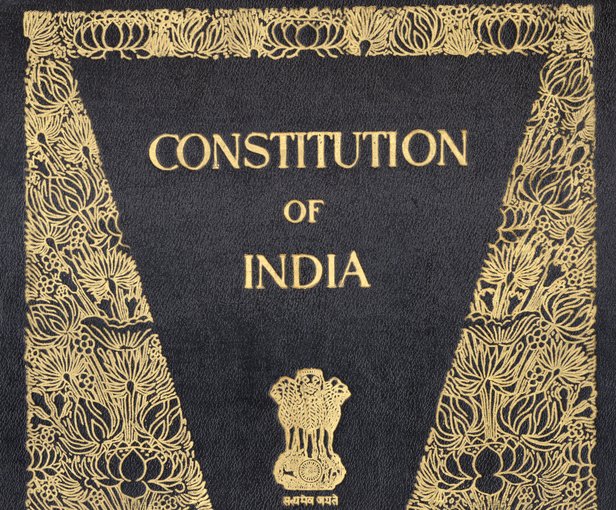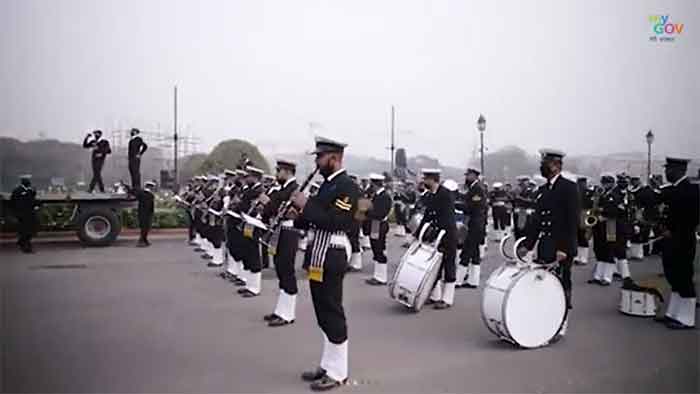
As India is about to celebrate its 72nd Republic Day with pomp, pride, and parades, it is also time to rethink whether the country is living up to its constitution. India became a constitutional republic on January 26, 1950, replacing the colonial government act of India of 1935. It was a memorable day for all Indians who transformed their lives from subjects to citizens and from oppression to liberty. Indeed, this changeover has instilled a sense of national pride in the heart of every Indian regardless of where he/she resides.
India’s constitution lays down a broad framework structure, powers and procedures, and duties safeguarding its citizens’ fundamental rights and duties. On January 26, 1929, the Indian National Congress made the famous declaration of “Poorna Swaraj,” and the late Prime Minister Jawaharlal Nehru hoisted the tri-color flag on the banks of the Ravi river. Thus, when the constituent assembly approved the constitution draft by the committee chaired by B.R. Ambedkar, many felt it necessary to celebrate the document on that day associated with national honor, which was January 26.
The constitution is very clear in its declaration “We the people of India, having solemnly resolved to constitute India into a Sovereign, Socialist, Secular, Democratic Republic and to secure to all its citizens: Justice, social, economic and political; Liberty of thought, expression, belief, faith and worship; Equality of status and opportunity; and to promote among them all Fraternity assuring the dignity of the individual and the unity and integrity of the nation.
What leaders like Mahatma Gandhi and Jawaharlal Nehru, with significant input from B. R. Ambedkar, have done to the populace of India was to introduce a new experience in freedom and democracy? The people of India were reeling from the oppressive rule under the British Raj and experiencing horrible discriminations from the feudalist/caste-driven policies of the powerful elites, who more often collaborated with the colonialists to control their own destiny.
Today, Kerala is considered to be a progressive state, thanks largely to the Nehruvian vision and the reform-minded local leadership in the past sixty years. However, before that period, as narrated in ‘Kerala: an overview” by Titus George, laws were extremely cruel towards the lower castes in those provinces. Like the medieval Catholic Church clergy in Europe, the upper castes enjoyed all the benefits, including tax exemption. A system of slavery was practiced with impunity, at least in the form of bonded labor and there were designated places of the auction of slaves. The landowners had the power to put their slaves to death.
The Brahmins enjoyed immunity from the death penalty, and after all, they have made the laws and applied them differently to different castes. Lower castes were subjected to the death penalty for theft and cow slaughter offenses. Capital punishment took the forms of being trampled to death by an elephant, being blown from the mouth of a cannon, by hanging which lasted three days (Chitavadam), and by mutilation. Most tenants could not keep cows, wear fine clothes, live in a gilded house, use metal utensils, wear gold ornaments, or travel in trains or automobiles. Violators were often severely punished with fines.
There was a marriage tax for the lower castes, probably preventing them from increasing and multiplying. The use of public roadways was forbidden to the outcastes, and anyone daring to pass within the polluting distance of a Brahmin, or a Nair would be cut down at once. Ezhavas had to keep 32 feet from Brahmins. Low castes could not wear shoes and carry umbrellas in public, even in heavy rains. The proper salutation from a woman to persons of rank was to uncover the bosom. The practice of untouchability was so widespread, even to the point that lower castes did not have the right to walk along the approach roads leading to temples.
A hundred years ago, Swami Vivekananda was so appalled by Kerala’s rigid and cruel caste system that he called it a ‘lunatic asylum’. The British did not want to disturb the hierarchical caste system too fast and too radically, and the principle of ‘divide and rule’ always helped their cause. However, they gradually abolished blatant forms of slavery.
Western education provided in missionaries schools created a new sense of equality and awareness about injustices and caste discrimination among the lower castes and among the members of the higher castes. In addition, great reformers such as Chattampi Swamikal, the saintly Sri Narayana Guru and Ayyankali, and the freedom struggle led by Mahatma Gandhi provided additional impetus to fight and end caste discrimination and carve a path forward for societal reformation and progress.
The story of Dr. Padmanabhan Palpu, which is available in the public domain, indicates the struggle even for a person who had the means for better education and a career. He was born in the Ezhava community and learned English from a Eurasian tutor at 12. Like his older brother, he seems to have used his family’s association with Christian missionaries to avoid the usual rule in the Kingdom that Ezhavas were forbidden from school attendance. He was subsequently refused admission to Travancore Medical College due to caste. However, he was able to attend a similar college in Tamil Nadu. Then he went on to further his medical training at London and Cambridge. However, back in India after obtaining a Licentiate in Medicine and surgery, he found that his caste status prevented him from securing employment in Travancore Health Service, which forced him to relocate to Mysore, where he became the Chief Medical officer.
I am sure that some may be wondering about my reason in retracing some of these historical facts. Short memories often have a way of obscuring recent paths and not revealing how humanity has traveled and survived rough terrains of life. What I have elicited above is a microcosm of what India had been before 1950. Although Kerala has come a long way, the remnants of these age-old despicable practices are still alive and well in many States. Lately, there has been a torrent of stories on the British legacy of exploitation and oppression, justifiably so, while obscuring or minimizing our own sins and shortcomings. Some authors may even succeed in convincing that if only the British hadn’t come, we would have been in a different orbit!
The India we witness today is what Ambedkar dreamed, Nehru built, and Gandhiji paid the ultimate sacrifice for. It is an epic journey of brave men and women who went on to create an incredible constitution of such breathless ambition with great determination. The people who lived in those villages divided by caste, subcaste, and religion ruled by 600 or so primarily autocratic rulers were suddenly given a lease to build their own lives. As we celebrate this Republic Day, let us be mindful as well that the same noxious forces who were in control seventy-two years ago are back in the sheep’s clothing, readying for an opportunity to pounce again! Nevertheless, it will always remain a phenomenal day in history for rejuvenation and renewal.
George Abraham is a former Chief technology officer and the Vice-Chairman of the Indian Overseas Congress, USA













































